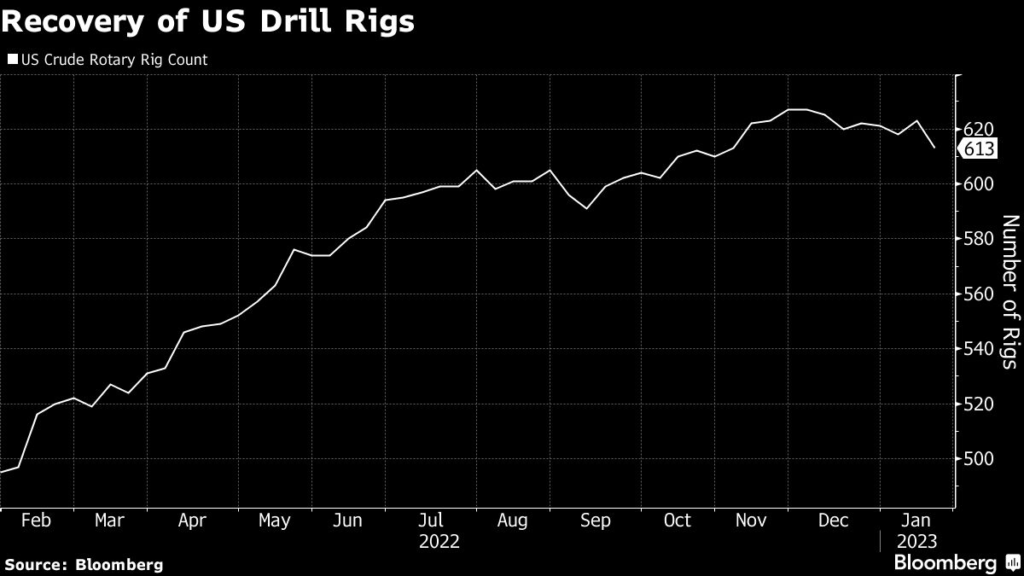US shale companies are set to post yet another strong set of earnings, off the back of robust oil and gas prices in the fourth quarter. But the biggest question for analysts and investors remains whether the industry’s bumper cash flow will tempt them to drill more.
(Bloomberg) — US shale companies are set to post yet another strong set of earnings, off the back of robust oil and gas prices in the fourth quarter. But the biggest question for analysts and investors remains whether the industry’s bumper cash flow will tempt them to drill more.
The focus of attention will be on explorers’ production targets, with the global supply-demand balance still tight and with China’s recent lifting of coronavirus restrictions expected to boost consumption. Shale drillers have said supply-chain issues, labor shortages, rising costs and unhelpful federal policies are preventing them from revving up production.
Here are four themes to keep in mind during the imminent round of shale earnings:
Plateauing Production
Shale explorers have struggled to keep US oil production growing, and even their modest increases slowed in the second half of 2022.
Exploration Spending
US exploration budgets are set to grow in 2023, but at a slower pace than last year. Global exploration spending will expand 14% in 2023, decelerating from an estimated 20% last year, according to a survey from Evercore ISI. Growth in North America is projected at 18%, half of what it was in 2022.
Rig Count
The number of drilling rigs searching for crude in the US has gained significantly from earliest phases of the pandemic, when oil demand plummeted. But in mid-January, shale explorers in the US parked the most rigs in more than 16 months, an indication of the fragility of that recovery in activity.
Slowing Completions
The lag between when an explorer drills a well and then fracks it to actually produce oil and gas can stretch to months or more. The count of drilled-but-uncompleted wells — known as DUCs — had plummeted since mid-2020 but showed signs of rising late last year. The question is whether explorers will resume eating into that backlog or plan to start building a new cushion of wells to be fracked.
–With assistance from David Wethe.
More stories like this are available on bloomberg.com
©2023 Bloomberg L.P.










